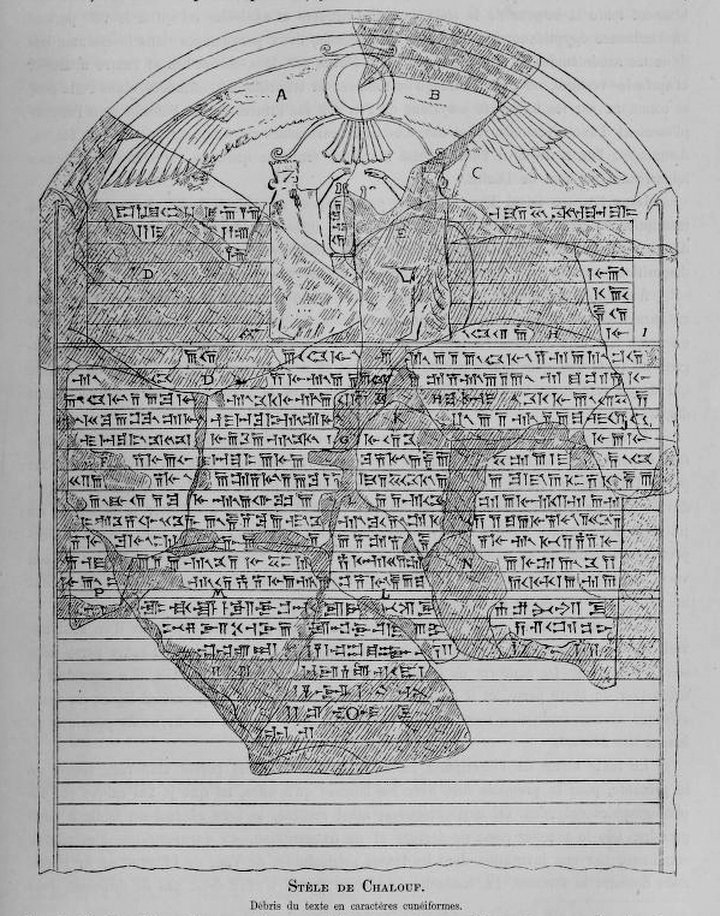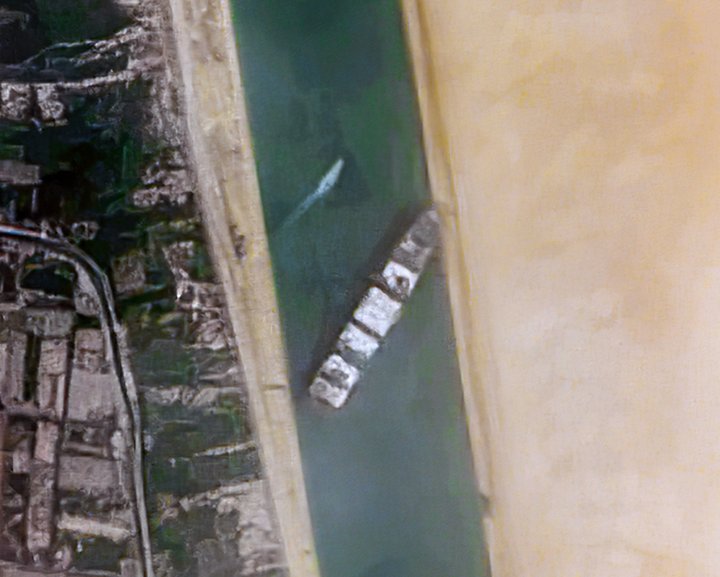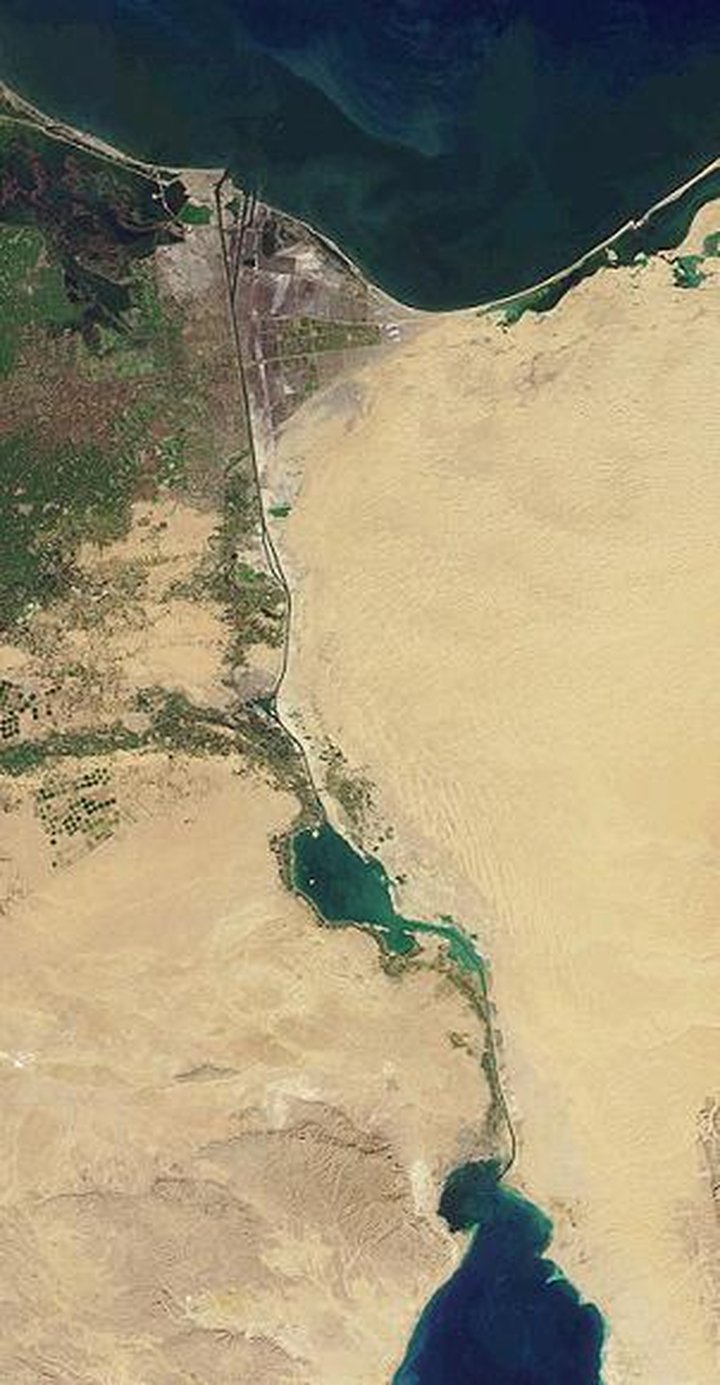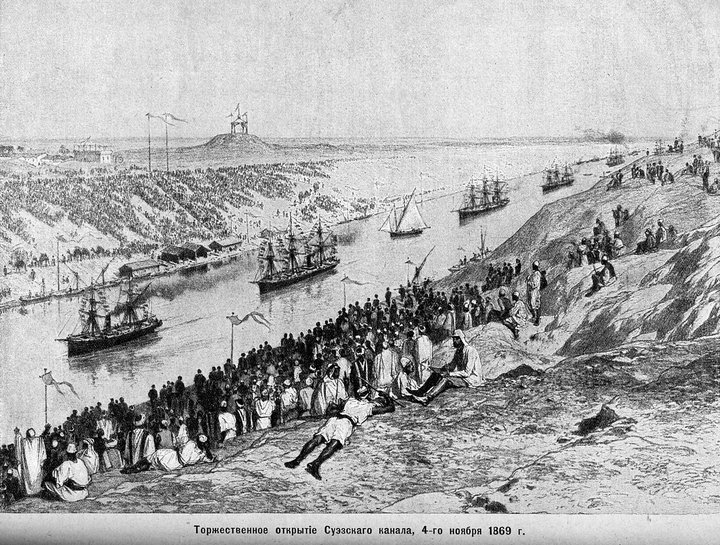King Darius says: I am a Persian; setting out from
Persia I conquered Egypt. I ordered to dig this canal from the river
that is called Nile and flows in Egypt, to the sea that begins in
Persia. Therefore, when this canal had been dug as I had ordered,
ships went from Egypt through this canal to Persia, as I had
intended.
— Darius the Great, 522-486 BC, Chalouf stele, Kabret, Egypt, written in Old Persian
###

1887 copy of the Chalouf stele by Joachim Menant. The original is now in the Louvre. (Public domain. Via Wikimedia.)
Suez canal problems? They started much more than two weeks ago, when the quarter-mile-long Japanese/Taiwanese container ship Ever Given managed to wedge itself across the southern (single channel) reach of the canal, blocking it for a week. Try 3,500 years, a thousand years before King Darius finally achieved success, when one pharaoh after another tried to dig a sea passage between the Red Sea and the Mediterranean. We know of at least four failed attempts, even though back then the Red Sea encroached into the desert farther north than it does now, making for a shorter project. And even Darius’ canal soon silted up once Persian control of the area ended.

ESA satellite image, March 24. (Processed satellite data by Pierre Markuse, via Wikimedia. Creative Commons)
More recently, the Ever Given incident wasn’t the first time Suez had been blocked, although it was the first unintentional blockage. Following the 1967 Six-Day War, when Israel rapidly overwhelmed Egyptian forces from the air, Egypt blockaded the canal at both ends, trapping fifteen cargo ships from all over for eight years. Dubbed “the Yellow Fleet” after being coated with desert sand, they were finally released when the canal re-opened in 1975.
The canal was originally opened in 1869, following ten years of construction under the guidance of French diplomat Ferdinand de Lesseps. This wasn’t the first French attempt at linking the Mediterranean to the Red Sea. Napoleon, during his brief campaign in Egypt (1798-1801) and before being thwarted by Britain, had his engineers locate Darius’ original canal, which extended north from the Red Sea to the Bitter Lakes (see satellite photo), thence westward to a branch of the Nile. Napoleon planned to restore and rebuild the 500 BC canal, except he wanted to route it north from the Bitter Lakes directly to the Mediterranean. However, surveys from his Egyptian expedition incorrectly showed the elevation of the Red Sea as 30 feet higher than that of the Mediterranean, which would have required a complicated system of locks, so the plan was abandoned as too costly. (In fact, the two seas are roughly at the same level: south of the lakes the canal is tidal, while between the lakes and the Med, the flow is north in winter, south in summer.)

This NASA image shows the Bitter Lakes between Suez City on the Red Sea and Port Said Mediterranean. The Ever Given was stuck about halfway between the lakes and the Red Sea. The 120-mile long canal cuts over 5,000 miles off a voyage from the Indian Ocean to Europe. About 50 ships pass through it every day. (Public domain, via Wikimedia.)
On a personal note, I thought I’d be admiring the canal when I traveled by bus from Cairo to Jerusalem some years ago. Sadly, I only glimpsed it from afar, since the main road from Cairo to the Sinai Peninsula ducks down under a long tunnel on either side of the canal. (On seeing a particularly regal-looking dog there, I thought of the classic palindrome “A man, a plan, a canal: Panama!” So I asked my Italian seat-mate, “Is god Zeus a Suez dog?” “Si!”)
Here’s my favorite image of Suez, an etching showing the first convoy to travel through the canal November 17, 1869.

Vladimir Vasiliev (Public domain, via Wikimedia.)
CLICK TO MANAGE